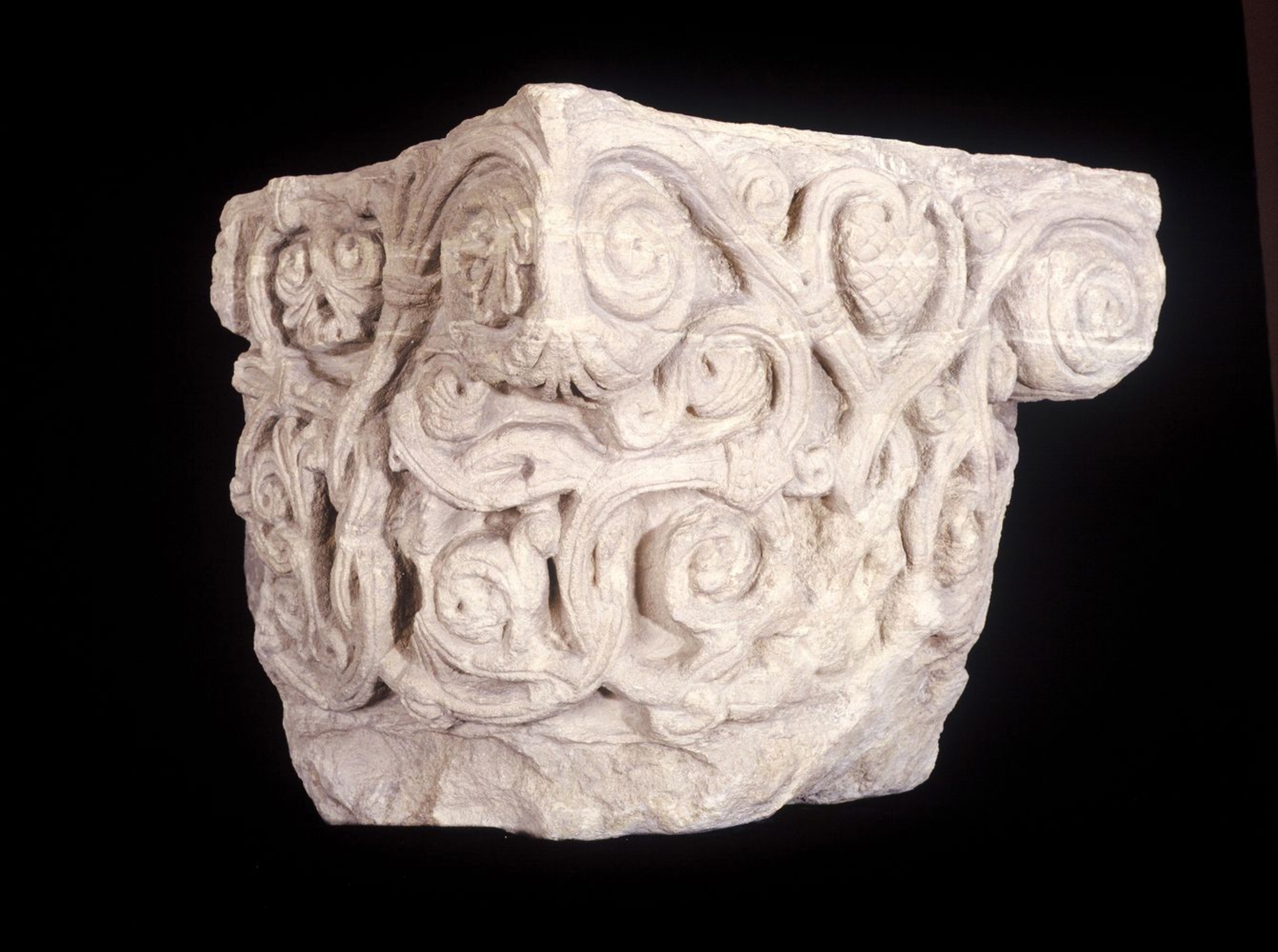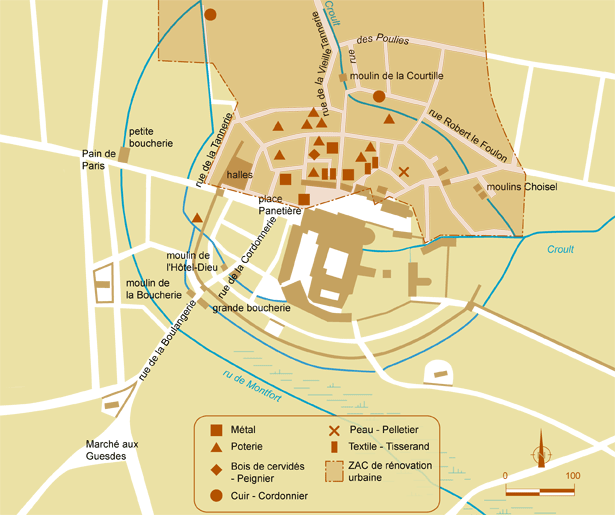- Home
- Crafts and daily life
- The medieval town and its crafts
Location map of medieval trades in Saint-Denis.
© UASD / Th. Sagory, M. Wyss
The growth of the medieval town was accompanied by a rapid increase in urban professions, whose principal roles were feeding, clothing and equipping the inhabitants. As the lord of the city, the abbey was particularly concerned with properly overseeing the various trades. The Livre Vert de Saint-Denis, compiled in 1411 on the orders of abbot Philippe de Villette (1398-1418), regulated such areas as taxes, working hours, and production supervision. The text reveals the town's tradespeople in all their diversity - bakers, butchers, oil vendors, cervoisebrewers, taverniers, innkeepers, leather workers, cordonniers,shoemakers, cobblers, cartwrights, furriers, fullers and weavers.
Certain sources-including a twelfth-century tanning pit from a furrier's workshop and a waste area from a fourteenth-century silversmith-enameller silversmith-enameller - offer archaeologists additional concrete information about the work of these artisans. On the other hand, archaeology is our only source of information about ceramic production,which was active between the thirteenth and fifteenth centuries. Throughout the Middle Ages, construction was a particularly important sector of activity.

